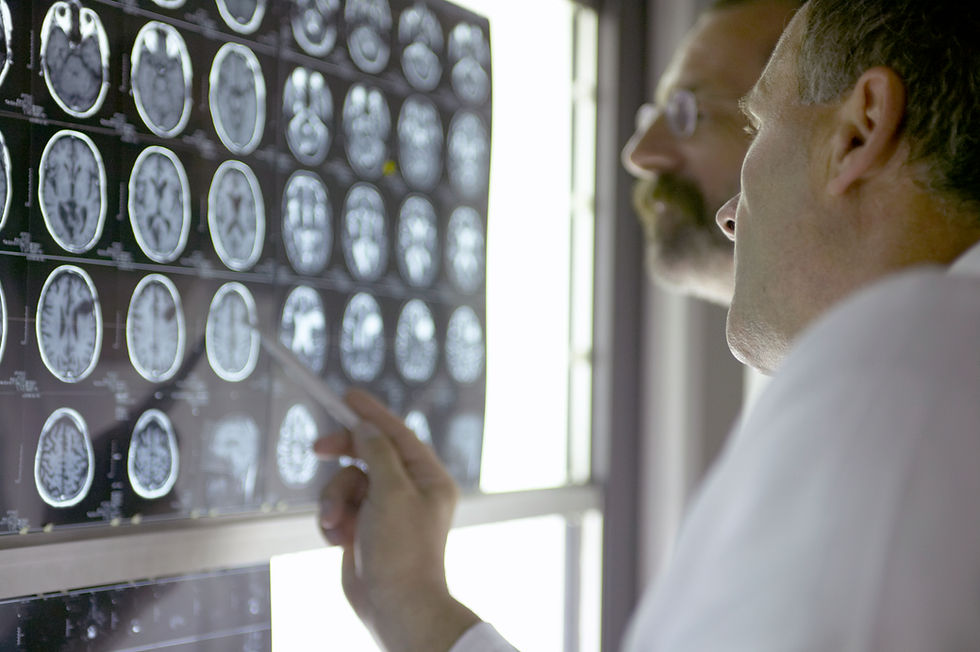The Consequences of Physical Inactivity in Youth
- T.j. Johnson
- Feb 25
- 4 min read
By: T. J. Finn

In today’s digital age, where screen time is a significant part of young people's daily lives, physical inactivity has become a growing concern. The consequences of insufficient physical activity during childhood and adolescence can have far-reaching effects, not only on physical health but also on mental and emotional well-being. Here's a deeper look at the impact of inactivity on youth.
Physical Health Consequences
Obesity: One of the most immediate and visible consequences of physical inactivity in youth is the rising prevalence of obesity. Inactive children are more likely to gain excess weight, which can lead to numerous health issues like diabetes, hypertension, and high cholesterol. Childhood obesity is also a strong predictor of obesity in adulthood, further increasing the risk of chronic diseases later in life.
Weakened Muscles and Bones: Physical activity is essential for the development of strong muscles and bones, especially in growing children. Without adequate exercise, young people may experience muscle weakness, poor coordination, and a lack of endurance. Moreover, physical inactivity can hinder bone density development, making them more susceptible to fractures and conditions like osteoporosis in later life.
Cardiovascular Problems: Youth who do not engage in regular physical activity are at an increased risk of developing cardiovascular problems. Lack of exercise can lead to elevated blood pressure, poor circulation, and an increased risk of heart disease. Physical activity helps to maintain a healthy heart by improving blood flow and strengthening the heart muscle.
Reduced Flexibility and Mobility: Without regular movement and stretching, children can develop stiffness in their joints and muscles, which can reduce their flexibility and range of motion. This may contribute to discomfort, poor posture, and difficulty performing basic physical tasks.

Mental and Emotional Consequences
Increased Risk of Anxiety and Depression: Physical inactivity has been linked to a higher incidence of anxiety and depression in youth. Exercise stimulates the release of endorphins, the "feel-good" hormones, which can help regulate mood and reduce stress. Lack of physical activity, on the other hand, can contribute to negative feelings, irritability, and poor emotional regulation.
Lower Self-esteem: Inactive children may also struggle with self-esteem issues due to physical health concerns such as weight gain or weakness. The lack of engagement in physical activities may affect their social interactions, as they might feel self-conscious or less confident when compared to their peers who are more active. This can lead to social isolation and withdrawal, further compounding emotional distress.
Decreased Cognitive Function: Physical activity is not only vital for physical health but also for cognitive development. Studies have shown that children who engage in regular exercise perform better in school, have better focus, and are more alert. Lack of exercise can lead to difficulty concentrating, poor academic performance, and a reduced ability to retain information. Physical activity promotes better blood flow to the brain, which is essential for cognitive processes like memory and learning.
Social and Behavioral Consequences
Decreased Social Interaction: Many physical activities, such as team sports or group exercises, provide opportunities for youth to engage socially with peers. Physical inactivity can lead to social isolation, as inactive children may avoid sports or group activities. This lack of social engagement can hinder the development of social skills and lead to feelings of loneliness.
Behavioral Issues: Physical inactivity can also influence behavior. Kids who are inactive are more likely to engage in unhealthy coping mechanisms like excessive screen time, poor dietary habits, and a sedentary lifestyle. This can also contribute to increased levels of aggression, irritability, and restlessness.

Long-Term Effects on Future Health
The effects of physical inactivity in youth are not confined to childhood. The habits developed during these formative years often carry over into adulthood, potentially leading to chronic health problems. Inactive youth are more likely to grow into inactive adults, and the consequences of that can include a higher risk of heart disease, diabetes, stroke, and other life-altering conditions.
The Importance of Prevention and Intervention
Preventing physical inactivity in youth requires a multi-faceted approach. Schools, families, and communities must work together to encourage children to move more. Schools can offer more opportunities for physical education, while families can engage in active hobbies together. Communities can create safe spaces for outdoor play and exercise, making it easier for kids to stay active.
In addition, educating young people about the benefits of physical activity and its impact on overall health is crucial. Encouraging kids to participate in fun, enjoyable activities, such as swimming, biking, dancing, or playing sports, can help make physical activity a lifelong habit.
Conclusion
The consequences of physical inactivity in youth extend far beyond just physical health—they also influence mental, emotional, and social well-being. Early intervention and consistent encouragement of physical activity can help prevent these negative outcomes and pave the way for a healthier, more active future for children and adolescents. By fostering a culture of movement, we can ensure that youth are not only physically strong but also mentally resilient, emotionally balanced, and socially engaged.




Comments